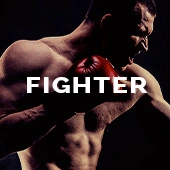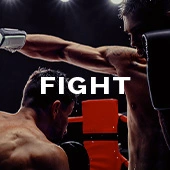Harlem Eubank’s first career defeat was a lesson, not the end of the world.
The Brighton man lost a scrappy fight with Jack Catterall on the cards after seven rounds for his first blemish in 22 fights, but the manner of it meant Eubank did not feel terribly deflated. It had not been a decisive decision, or a resounding stoppage, it was clear, but the bout had not run its course and Eubank, 31, felt he was going to come on strong in the latter stages.
“It didn’t feel that way to me,” Eubank told BoxingScene about how it felt to suffer his first loss.
”So it’s like, as a fighter, I feel like when you come away from a situation and you’ve really suffered defeat... And I didn’t feel like that in the fight or after, but I took a lot of lessons from the situation inside the ring and outside. I took a lot of confidence and a lot of things from managing the first half of the fight, knowing that at any stage in the fight, it can be pulled for reasons out of my control. I took a lot of lessons from that going forward and have applied myself and become better from the other side. It felt very inconclusive. There were things in the fight I think I’d done well with and things that I could have done better… certain approaches stylistically, his style is very negative, but we expected something different. But in terms of adapting, you have to adapt. And that is one of the things I’ve learned from that fight and I’ll take that going forward.”
Eubank, 21-1 (9 KOs) didn’t go into panic mode nor did he pass the buck after his first career setback. His team has stayed the same, including trainer Charlie Beatt, and he accepts responsibility for what happens in the ring.
“This is the fight game. You’re responsible for what happens in there,” Eubank added. “And we’re making changes to become a better fighter and making adaptations.”
Eubank, who fights for the first time since Catterall on Friday night at the Brighton Centre against 19-1 Canadian Josh Wagner, initially called for a rematch, but there was little interest from either promoter, be it his own Kalle Sauerland – or Eddie Hearn, Catterall’s, owing to the clash of styles.
“I wasn’t aware what was going on [with how much longer was left in the fight and the fight going to the scorecards as opposed to being ruled a technical draw]. I didn’t know if I was ahead, but I was saying to him [Catterall] and his team, ‘We’ll do it again’ from the stance that I thought I was in front. I wasn’t calling for a rematch because I thought I was behind.
“So after the fight, I see everything unfold, I see, obviously, stylistically, people wasn’t interested in the rematch. So from that stance we move forward. We go on to bigger and better opportunities. We use the experience to move us forward in that direction. And I’m not one of these people that are going to cry over spilt milk. I’m not going to go after something that, if someone doesn’t want to fight and a fight finishes like that, that’s up to them. But as a fighter, usually you want to go in there and prove that you’re the better guy. And if a fight finishes without a conclusion, usually you run it again. But I’m happy to move on to other opportunities if that's not the case.”
Eubank has impressed in past performances. He and Catterall did not gel and it was around that time that the ‘Tom and Jerry boxing’ phrase was now infamously coined.
But Eubank is a student of the sport and he has worked diligently on trying to master the art form of boxing. Without outside commercial pressures, is it tough to consolidate being a boxer rather than needing to go to war each time?
“I think as a master boxer, the aim is to take out your guy within the 12 rounds,” assessed Eubank. “And the mastery is how you can manage the rounds to get to that stage in the fight. We saw the same thing with Timo Schwarzkopf, that's someone that’s been in there with Jack [Catterall] and many other top guys and never been stopped until I fought him at the Brighton Centre and I managed to get him out of there for the first time in his career.
“I think as someone that studies the art form and is trying to become proficient in the art form to the best of my ability, the goal is to go in there and get your guy out of there. And it’s about managing the rounds to get to that point. And I think stylistically, I’ve shown in all my step-up fights and all my big fights, that that is how I go about the job.”
Tris Dixon covered his first amateur boxing fight in 1996. The former editor of Boxing News, he has written for a number of international publications and newspapers, including GQ and Men’s Health, and is a board member for the Ringside Charitable Trust and the Ring of Brotherhood. He has been a broadcaster for TNT Sports and hosts the popular “Boxing Life Stories” podcast. Dixon is a British Boxing Hall of Famer, an International Boxing Hall of Fame elector, a BWAA award winner, and is the author of five boxing books, including “Damage: The Untold Story of Brain Trauma in Boxing” (shortlisted for the William Hill Sportsbook of the Year), “Warrior: A Champion’s Search for His Identity” (shortlisted for the Sunday Times International Sportsbook of the Year) and “The Road to Nowhere: A Journey Through Boxing’s Wastelands.” You can reach him @trisdixon on X and Instagram.



